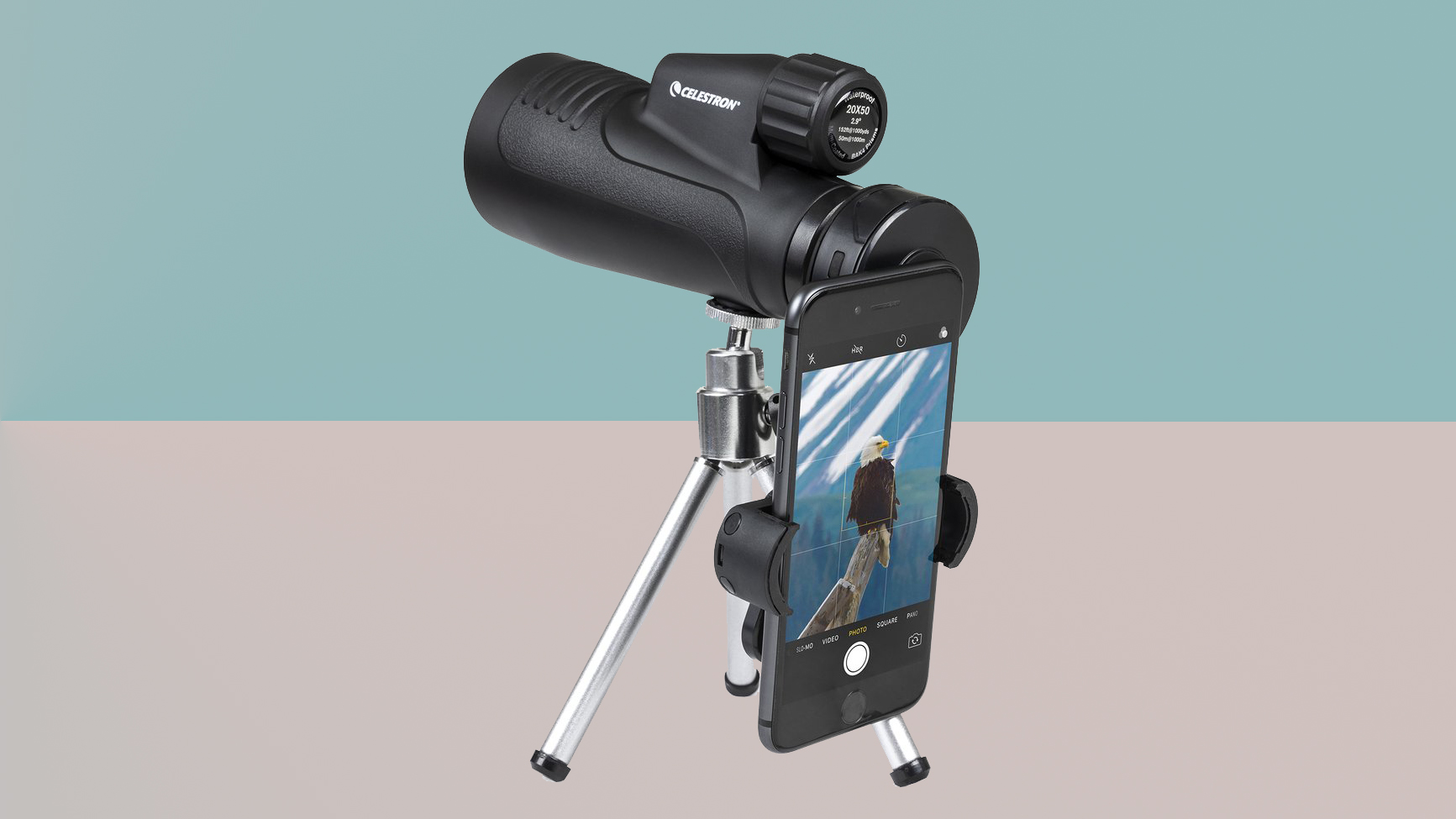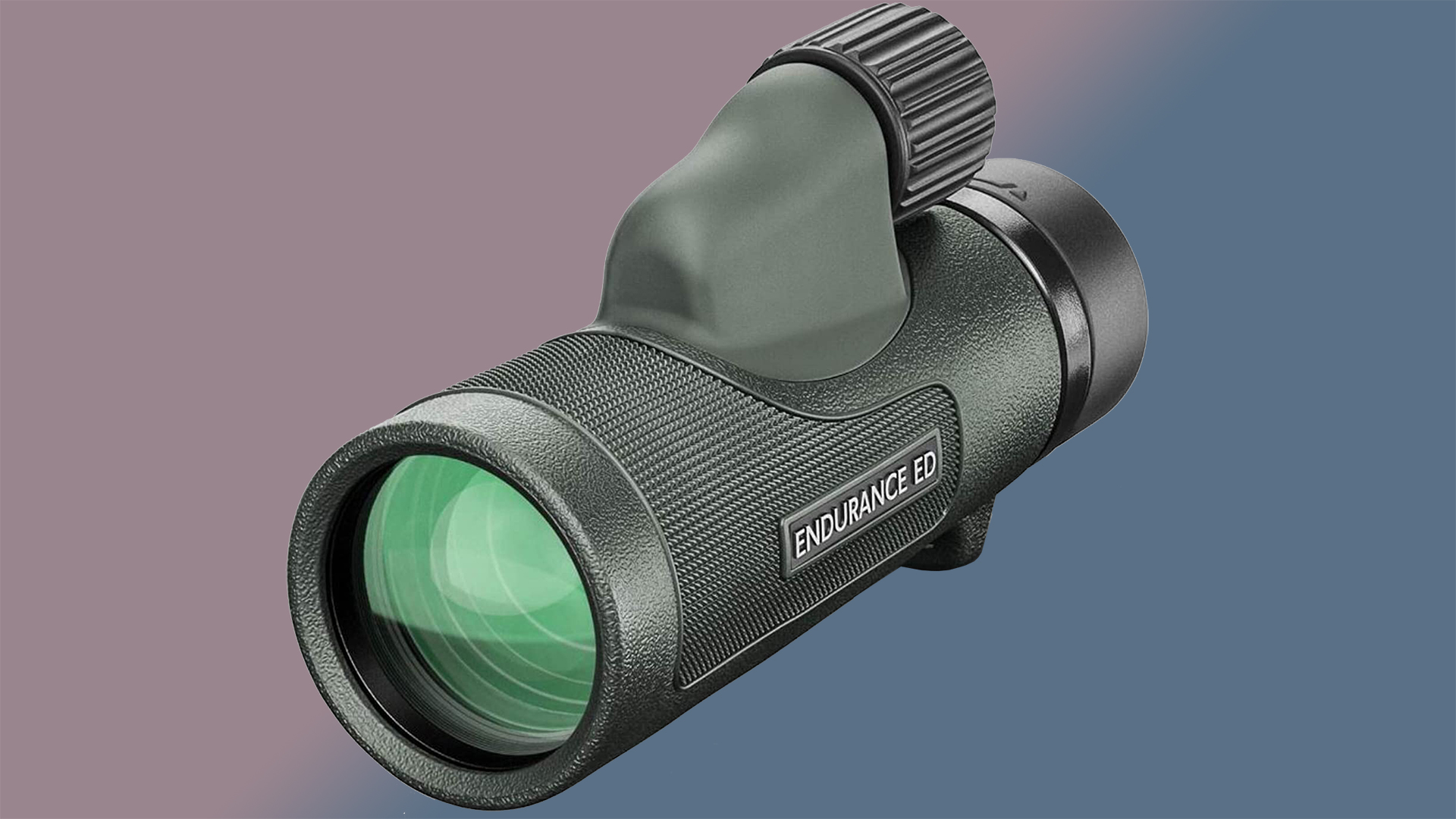

While a pair of the best binoculars can be useful for many things, from bird-watching to nature-spotting, there are times when they can seem too awkward or cumbersome – for example when out trekking or fell walking. In that situation, there's the alternative of the less intrusive, but still more-than-useful monocular. Essentially the monocular and binocular serve the same purpose of bringing the faraway closer, but whereas the binocular is constructed from two tubes and requires two eyes to view, the monocular requires only one in both cases.
So today's best monoculars offer increased portability, but what of practicality too? Here we examine why you might want to opt for a monocular and what to look for if you're considering buying a monocular. Before you make your decision, you might also want to consult our monocular vs binoculars article for a direct comparison.
What is a monocular?
A single tube device with lens at the front and an eyepiece at the back, we can think of the monocular as essentially half a binocular, or a mini telescope if you prefer. That may make it seem like a niche device, but head to any bird fair and you'll find monoculars a-plenty for sale. As well as being useful for watching wildlife from a distance, the compact size and lightweight construction also ensures they're very handy for packing when heading out hiking or exploring. They can also be held securely in the palm, while focus can be adjusted via the same hand, making for operation that's simplicity itself in terms of user-friendliness.
Which monocular features should I look for?
The important features we're looking for on a monocular are essentially identical to those we'd be examining on a pair of binoculars; chiefly the magnification and range being offered and the size of the lens in use, written as, to take just one common example, 8x42. Here the 8x denotes the magnification and the 42 is the diameter of the lens in use, measured in millimetres. The bigger the lens, the clearer and wider the view runs the general rule of thumb.
Naturally because the monocular is a more compact and portable device than a pair of binoculars, the magnification on offer tends to be less overall, while the field of view is narrower. At the same time, this can make the monocular a more affordable option as well as a more portable one than either a pair of binoculars, a telescope or spotting scope. For those looking for true versatility it's also worth checking out how close the monocular can focus, not just how far.

Hawke Endurance ED 10x42 Monocular
Aside from size and weight of the device, width of the objective lens and power in terms of magnification, we'll also want to be checking that the monocular provides us with the ability for use in the wet as well as the dry. That means us running an eye over the specification sheet to check if it's offering nitrogen purged housing to prevent fogging, features multi-coated water repelling optics, and/or rubber-coated surfaces to aid grip. If we really require the ultimate in waterproofing – in case there's any danger of us submerging the monocular in water for a period of time – look out also for a monocular offering 'o-ring' seals. Further bells and whistles include the possible inclusion of ED (Extra-low Dispersion) glass to reduce colour fringing and help ensure no detail is lost when observing our subject/s. Aluminium housing also provides strength while keeping the overall build portably lightweight, while twist up eyecups further aid comfortable viewing.
If we really drill into spec, terms such as 'roof prism' and 'porro prism' will crop up, the 'prism' in each case being the element in our device that refracts light and provides us with an upright image. These are with reference to the internal construction and 'type' of binoculars, spotting scopes and yes, the monocular. The roof prism, so-called because it features a reflective prism where two faces meet at a 90-degree angle, thus resembling a roof, creates a straight path between objective lens and eyepiece. The porro prism meanwhile is used to increase the effective focal length of the optical path within a space that is shorter than it could otherwise accommodate. Typically a roof prism construction makes for a lighter and more compact device, while a porro prism construction makes for a more affordable alternative.
Get all the latest news, reviews, deals and buying guides on gorgeous tech, home and active products from the T3 experts
Why would a monocular suit me?
As we've established, the combination of power and portability is what makes a monocular attractive, especially when viewed as a general-purpose observational tool for travelling light with. While, alternatively, there are indeed plenty of compact binoculars available, sometimes even these may seem too cumbersome and that's when the monocular comes up trumps.
The vast majority of monoculars are designed and devised for terrestrial daytime use. Yet it is possible to pick up a specialist night vision monocular to enable us to continue observing even when it gets dark. Some of the more high tech examples allow users the ability to live stream footage straight to a mobile device, and/or record direct to SD card. Be advised however such extra features inevitably add to the weight as well as the overall price. So weigh up whether you'll actually need these features before buying, or would be wiser to direct your budget towards a monocular with the key features of a useful magnification – say 8x or 10x for birding or wildlife watching – plus a decent objective lens diameter, say between 40 and 50mm, for doing the same.

Gavin Stoker has been writing about photography and technology for the past 20 years. He currently edits the trade magazine British Photographic Industry News - BPI News for short - which is a member of TIPA, the international Technical Imaging Press Association.